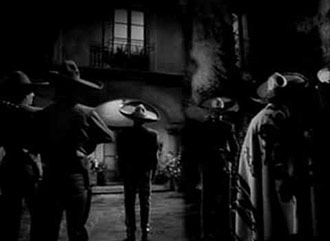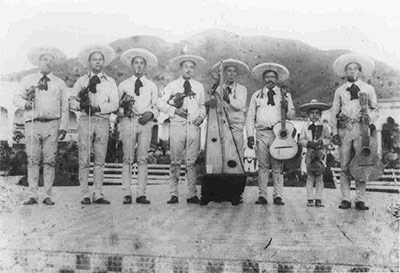Mariachi music is a unique, distinctive style of music that is considered by some to be the “heart and soul” of Mexico.
Also, especially in the Southwestern United States, it is associated with the cultural heritage of the Mexican American people.
Mariachi bands often work with dancers, which add color and excitement to their lively, traditional music.
A full mariachi band usually includes 2 trumpets, 6-8 violins, a guitarron (a deep acoustic bass guitar), a vihuela (a round-backed acoustic guitar), and a guitar. Vocals are used as well.
Origins of mariachi bands
The origins of the mariachi bands go back hundreds of years, but the form of mariachi music we know today began in the 1880s in the state of Jalisco, Mexico.

Map of Jalisco, Mexico
During this time, the mariachi band consisted of the instruments: a vihuela, 2 violins, and a Mexican folk harp (later replaced by the guitarron). Trumpets were added later — during the early days of broadcast radio.
Early mariachis would wander from town to town, singing both songs of folklore as well as current news. The strolling musicians played in town squares, living off tips.
There are disputes as to the origin of the word, but one commonly accepted explanation is that “mariachi” came from the name of the wood used to make the wooden platforms where dance groups would perform to the music of the village musicians.
From the very beginning, mariachi music was music made for dance.
To deliver messages of love and to celebrate special moments
Back in the times when young men and women were kept apart, mariachi music became a way to deliver messages of love.
As part of courtship, a young ardent admirer would dedicate a song to his beloved. The mariachi band would go to her street, stand beneath her window, and play the serenata (or serenade).

Mexican serenata
The sweet, romantic music not only would make its way to the young woman, but would swell and be carried through the entire town for all to enjoy.
For many years, and even today, mariachi music is used to celebrate great moments such as birthdays and quinceañeras, patriotic holidays, and is commonly played at baptisms and weddings.
Many mariachis even play during the Catholic mass at some churches.
Origins of mariachi wear
Prior to the 1930s, the mariachi bands wore homemade white cotton pants and shirts along with leather sandals and hats made out of straw or palm leaves.
These were common peasant clothes at the time. However, in the 30s, they began wearing the more elaborate, ornate charro suits that we associate with the traditional mariachi attire today (a charro is a traditional Mexican horseman).

Members of Mariachi Vargas in 1932
Charro suits are typically black with heavy gold – or silver – threaded embroidery and sometimes even ornamental buttons. For accessories, they wear a bolero or bow tie, an adorned belt and a wide-brimmed hat called a sombrero.
Part of Mexican culture
Mariachi music remains to this day an important part of Mexican and Mexican-American culture.
In the video below you can see Mariachi Vargas perform the popular song “El Son de la Negra“:
Because it is so tied up in traditions and celebrations, many times hearing mariachi music will evoke fond feeling and memories in their audience.
It is important for a new generation of musicians to learn and appreciate this music so they can carry it forward, where it will be enjoyed for many future generations.
![]()
Image credits:
Wikipedia




